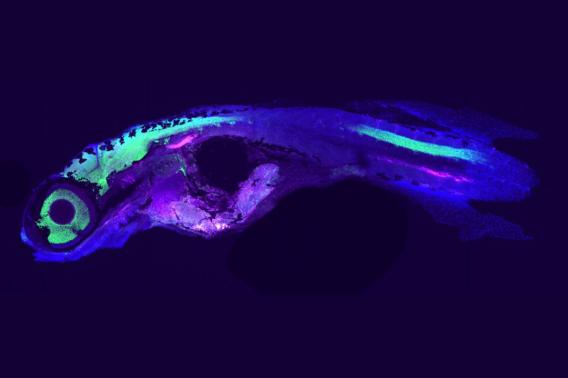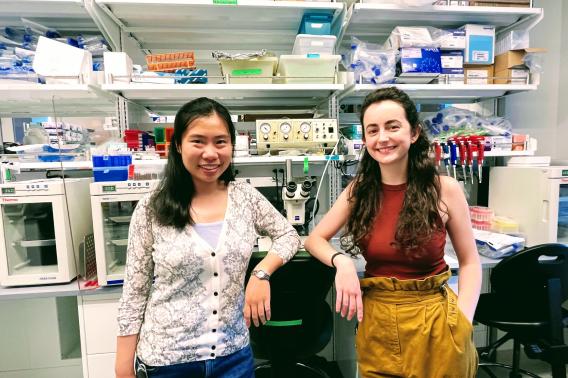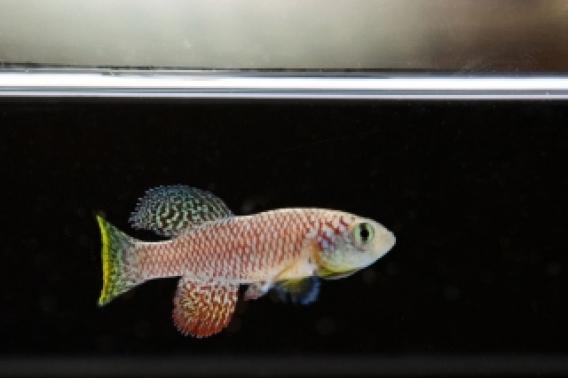A fish’s life: How the short-lived Killifish could reveal principles of human aging
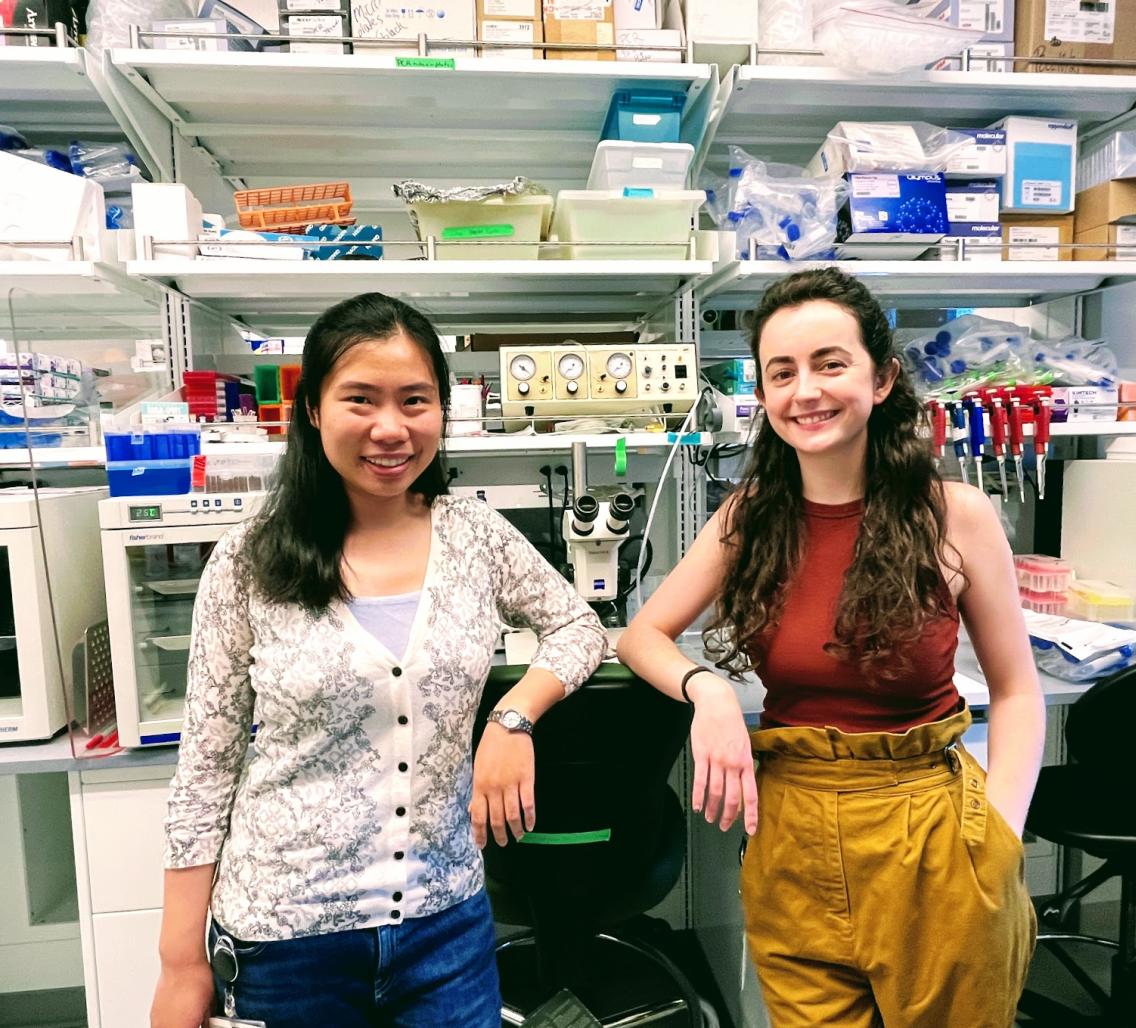
At the start of the COVID-19 pandemic, Wu Tsai Neurosciences Institute trainees Jingxun Chen and Emma Costa found an unusual way to pass the time during lockdown.
While some baked sourdough and others learned guitar, Chen and Costa recruited their families to help build automated fish feeders.
“It was such a family project, let me tell you,” laughed Chen, a postdoc in the research group of Anne Brunet. “I had my entire family building feeders with me. We had soldering stations at different places in our house — my dad would do one section, my mom would assemble them.”
This cottage industry was motivated by an ambitious collaboration between Brunet’s research group and the neighboring lab of Tony Wyss-Coray, where Costa is a graduate student, to crack age-old questions about the biology of aging itself by studying the remarkably short-lived African Turquoise Killifish.
As the Stanford Neurosciences Building began to re-open for researchers, the collaborators returned to the more conducive engineering environment of Wu Tsai Neuro’s shared Vincent V.C. Woo Sandbox Laboratory. Having completed an unprecedented system for studying killifish aging from hatchling to grave, the team now aims to uncover the secrets of extending our own healthy lifespans.
A study detailing the project was published December 19, 2022 in eLife.
Healthy eating, healthy aging
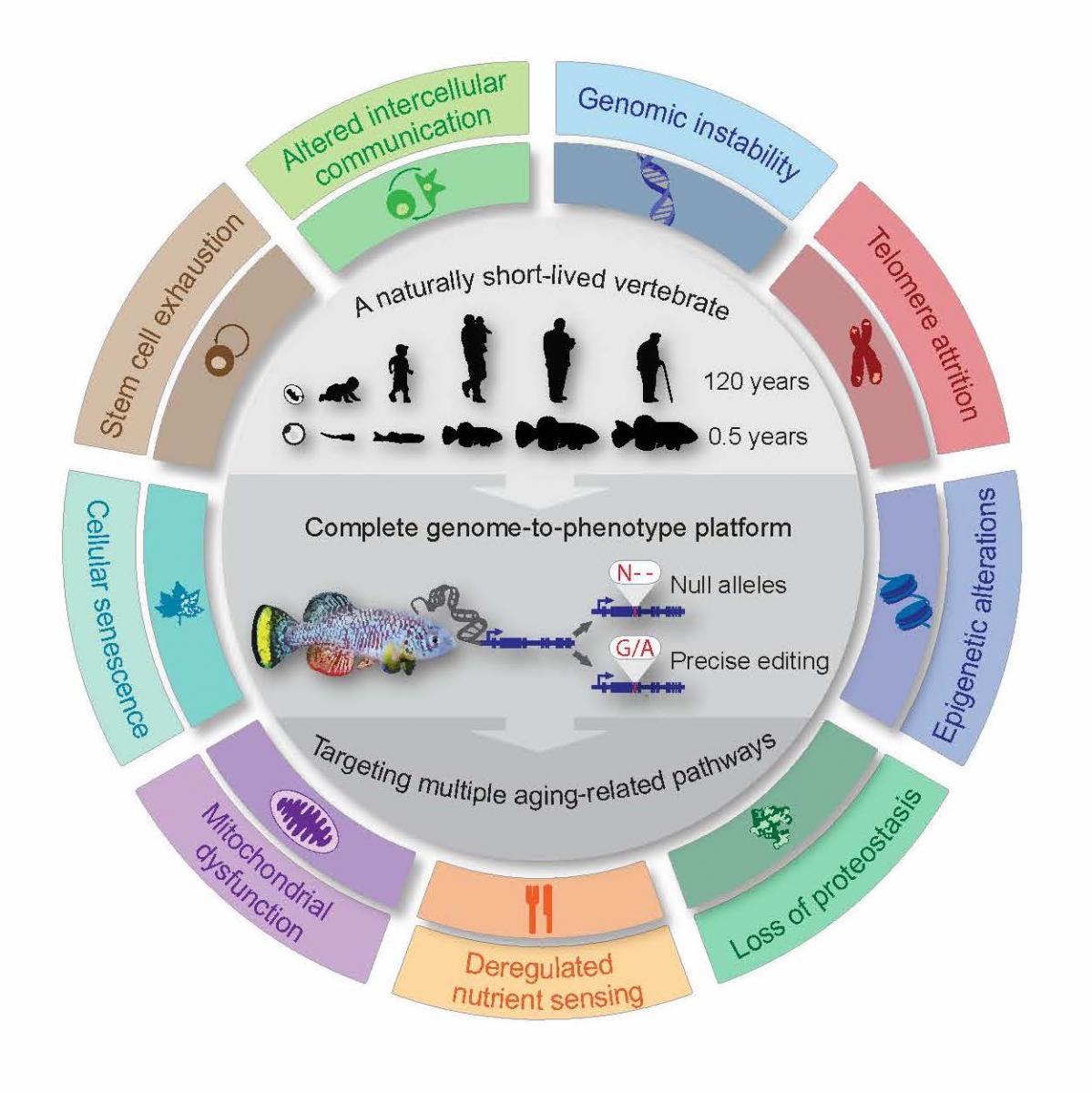
Illustration of how Brunet and Wyss-Coray teams plan to use the Killifish to study the biology of human aging. From Harel et al, 2015, courtesy Itamar Harel.
Everywhere you look, there seems to be a new “science-based” program to eat your way to a longer and better life. From the fish-and-legume Mediterranean diet to breakfast-skeptical “intermittent fasting,” there’s an increasing belief that getting our meal plans in order could be the key to reaching a healthy old age.
While there’s partial evidence for some of these claims, testing them rigorously is difficult. The reason? Humans just live too long. It would take decades to conduct the life-spanning studies needed to tease apart the relationship between lifespan and diet. But that’s just the problem now being addressed by Brunet and Wyss-Coray’s collaboration, which seeks to tackle the herculean task of studying how external age-related factors shape the entirety of our lifespan, including how we age and, in the end, how we die.
The team turned to the killifish, which in its brief lifespan of 4-6 months shows many of the same age-related disease processes seen in humans. By replacing human subjects with these ephemeral fish, the Brunet and Wyss-Coray groups are free to pursue what would otherwise be an impossible research project: to monitor every aspect of the lifespans of hundreds of killifish all at once, from cradle to grave, in the process getting a highly condensed version of the decades-long human aging process.
“We are very fortunate to be working with the Brunet lab and harness the power of this short lived vertebrate study aging and how it might impact the brain,” said Wyss-Coray, who directs the Phil and Penny Knight Initiative for Brain Resilience at Stanford and sees the killifish as a source of promise in potentially uncovering “tractable and translatable aging interventions.”
Researchers have used other vertebrate animal models before to study aging, but none as easily scalable as the killifish. For Brunet, it’s this scalability, combined with genetic tools that the team has pioneered — including sequencing of the fish’s genome and application of CRISPR gene editing — that makes the creature such a compelling model. In December, the Knight Initiative for Brain Resilience awarded Brunet's team one of its inaugural Catalyst Grants to advance this research.
“This is an exciting time,” Brunet said. “These features will help identify new principles underlying vertebrate aging.”
And here’s where the fish feeders come in

The African turquoise killifish could hold the secret to the biology of aging. Photo credit Nicholas Weiler.
To nurture and monitor hundreds of killifish 24/7 would require an army of bleary-eyed graduate students to stay up all night, every night, for months or years. To make this ambitious effort possible, the Brunet lab developed an automated care and observation system to track influences on fish aging throughout their lifespan. At the core of this system is a customizable feeding system developed by Andrew McKay, a former graduate student from the Brunet lab who now works at Genentech and is lead author on the team's new eLife study. The system allows researchers to automate feeding around the clock while controlling and monitoring exactly what the fish are eating and when.
Each killifish tank is equipped with a battery-powered rotating disc, which takes in food at one end of the feeder and dispenses it at the other. As the food rotates around the feeder, it passes between a basic light sensor comprising an LED and a photoresistor. The food blocks the LED from shining onto the photoresistor, automatically logging one feeding rotation to the team’s database.
Like most biology labs, the Brunet lab is not set up for elaborate engineering projects, so once the Stanford Neurosciences Building was reopened to researchers, Chen, Costa and a third postdoc from the Wyss-Coray lab, Ian Guldner, set out to take advantage of Wu Tsai Neuro's Sandbox Lab. The lab, a general purpose collaborative space in the neurosciences facility, provided ample space to develop the system and produce automated feeders, first for a proof-of-concept and then for additional experiments. The Brunet lab paired this feeding system with a comprehensive video monitoring system, so that researchers were able to not only dictate what these killifish ate, but also track how they grew, aged, and declined over time.
In their new eLife study, the Brunet lab, in collaboration with the Wyss-Coray lab, used the feeding system to demonstrate the impact of diet on killifish lifespan. Setting up the feeder to restrict how much and when the killifish ate, the researchers found that male killifish whose diet was restricted actually tended to live longer, whereas female killifish lived the same lifespan regardless of food intake.
Of course, diet isn’t only important as a factor affecting aging — it’s also a useful tool to measure aging. Using the video monitoring system to record the behavior of these fish at key time points across their lifespan, the collaborators were able to set up an associative learning assay, in which they trained the killifish to associate the automated dropping of food with a red LED light. By monitoring this learning ability over the killifish’s lifespan, the team seeks to understand how cognitive fitness changes with age.
This baseline data will now serve as a valuable point of comparison for the team’s pursuit of interventions that might help maintain cognitive fitness through old age.
“With this study, the feeding system was especially helpful, because we could program it to feed the fish as many times as we wanted,” said Chen. This makes the system a vast improvement over currently available commercial models, Chen said, which can only dispense food in preset amounts — something that would have severely limited the lab’s ability to design the highly precise studies it hopes to pursue in the future.
A foundation for understanding the course of natural aging
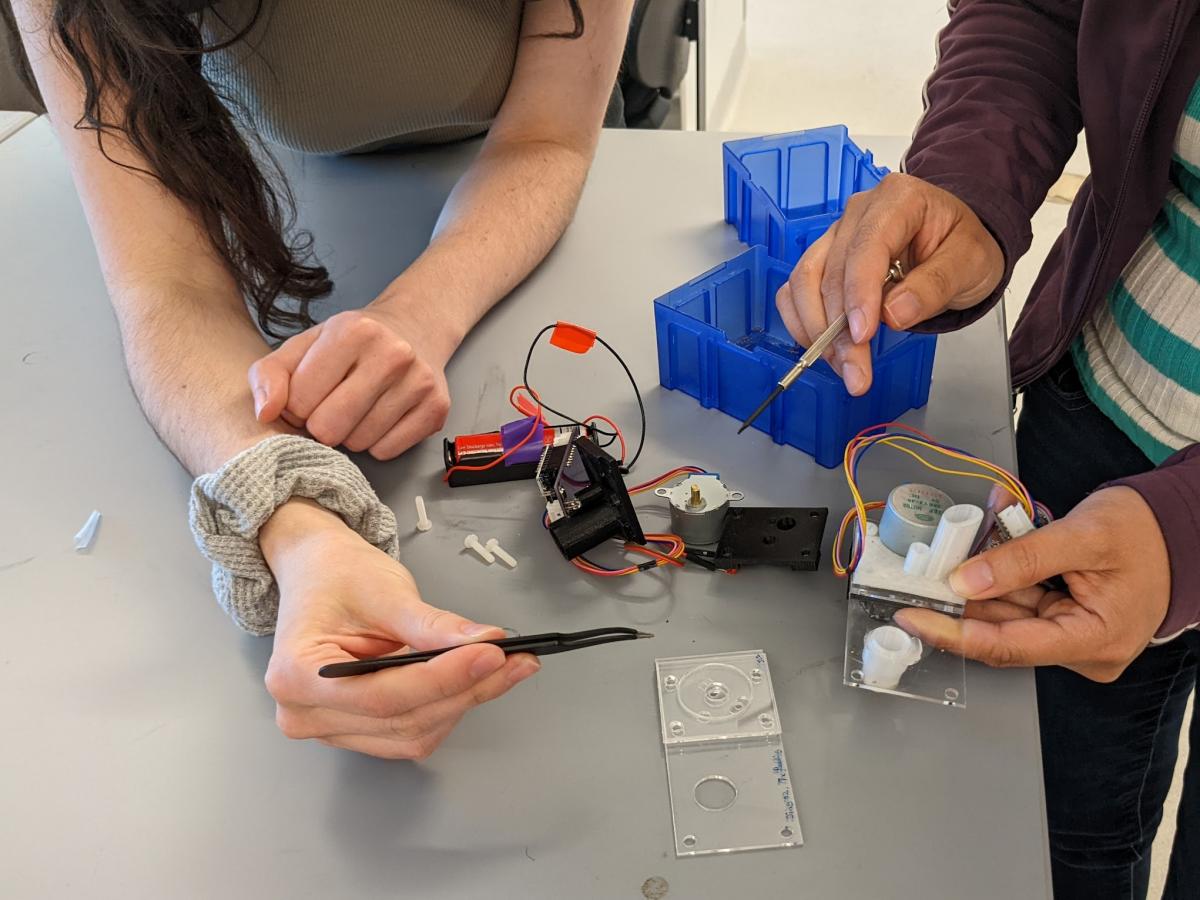
Costa and Chen showcase the electronics behind their automated Killifish montoring system. Image credit Nicholas Weiler.
And it’s not only diet that the Brunet lab hopes to measure. These monitoring and feeding systems allow the lab to design life-spanning, high volume projects of any sort. One project that Chen, Costa, and Guldner are working on: a killifish RNA sequencing atlas.
The project logs mRNA data in organ tissues belonging to killifish at different life stages. Successfully attempted in mice, the goal is to understand how the key features of the killifish aging process — the same features found in humans — might both differ and be interconnected across the killifish’s organs.
“By testing how different organs age in the same animal, we can provide a foundation for understanding the course of natural aging,” Costa said. “This provides a baseline for comparing the efficacy of different methods of extending lifespan.”
Chen and Costa are each using this powerful lifespan research platform to pursue their own questions about the biology of aging.
For her part, Chen studies how mating affects vertebrate aging and lifespan. Past studies have demonstrated that mating shortens lifespan in invertebrates such as fruit flies, and Chen is interested in designing killifish-centric studies to help understand how this works.
“I hope to spotlight ‘sexual history,’ which is an important component of an organism’s life history that many aging studies ignore,” Chen said. “I want to motivate better clinical tracking of sexual history, so that we can better investigate its role in human aging.”
Costa, meanwhile, is interested in the impact of aging itself, especially on a vertebrate’s immune system.
“As humans age, we are often less able to mount effective immune responses and are more susceptible to inflammation and autoimmune disorders,” Costa said. Understanding how this works in killifish may help enable researchers to design ways to preserve immune system efficacy as we age.
The lab is still far from understanding how exactly intermittent fasting or the Mediterranean diet helps us age better, or even why. But they remain hungry for answers — and with the help of one unusual animal and a lot of engineering, they are firmly on the hunt.
Researcher Affiliations
Brunet is the Michele and Timothy Barakett Endowed Professor in the Department of Genetics and a member of the Wu Tsai Neurosciences Institute.
Tony Wyss-Coray is the D.H. Chen Distinguished Professor of Neurology and Neurological Sciences, the Director of the Phil and Penny Knight Initiative for Brain Resilience at Stanford University, and a member of the Wu Tsai Neurosciences Institute.
Chen is a Jane Coffin Childs Fellow and Stanford Jump Starts Awardee in the Brunet lab at the Wu Tsai Neurosciences Institute.
Costa is a Ph.D. candidate in the Neurosciences Interdepartmental Program in the Wyss-Coray lab at the Wu Tsai Neurosciences Institute.
